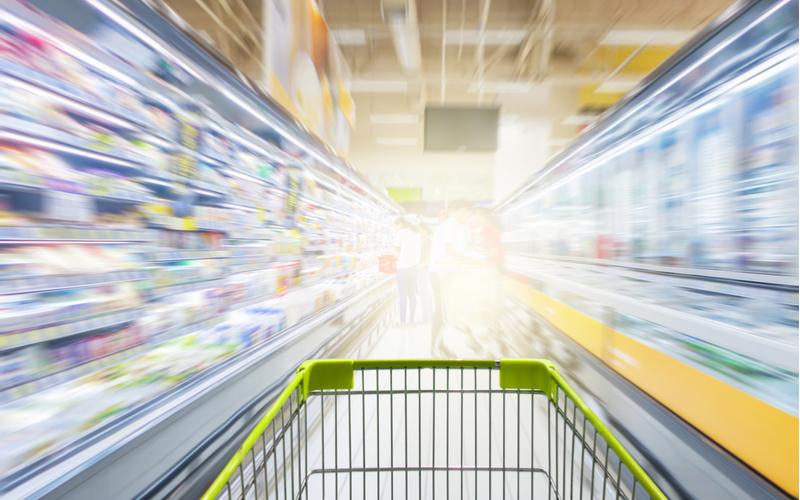The Tariff Bill Comes Due
Higher tariffs are a reality, perhaps just the beginning, but so is the reality of who pays for them.
For years now, we’ve heard the claim that these tariffs are a way of asserting the national will, taking back what is ours from foreigners who have been stealing from us, bolstering our industries in the face of unfair competition from abroad. The implication is that someone else is going to pay while we are going to win.
We’ll show them! The president has coined a new phrase for his policy: Powerful Trade.
Against whom is this power really wielded? We are discovering this now for the first time in many generations.
What are we learning?
All rhetoric aside, all those wild claims about the greatness that will come to us through protection, and now we see exactly what it means: you are being taxed more by your own government. The policy is now only a few months old and it is now obvious what’s going on.
Prices are up for vast numbers of goods. Steel is up 33%. Aluminum is up 11%. These increases are in turn reflected in the first major sightings of higher consumer prices for items such as sodas, office furniture, RVs, beer, boats, snowmobiles, and motorcycles.
These are some items tracked by writers at the Wall Street Journal but there are much more to come as the tariffs on China crawl through production structures and affect virtually everything. Other sources mention disposable diapers, paper towels, and fast food.
This already feels like inflation and will be recorded as such in price metrics. But this is not correct. Inflation is an issue concerning money and credit expansion. The source of these price increases is different: a brutal imposition of higher costs of doing business imposed directly by policy.
Blaming Business
As the media is reporting all this, you can pick up a slight hint that this is the fault not of government policy but of business itself. The idea is that selfish companies are refusing to absorb the higher costs but rather passing them on to consumers.
The phrase “pass on the costs to consumers” sounds so effortless, elegant, and frictionless. It’s something companies do when they have to pay more for manufactured inputs, taxes, mandated labor benefits, or some other new cost of doing business. It’s simple, right? You just raise your prices. Consumers pay more and that’s the end of it.
One thing prevents this from actually working: supply and demand. Higher prices mean that the quantity demanded by consumers falls. To what extent depends not on some mechanical factor but on human choice. If the proposed price for anything is rejected by consumers, profitability falls and jobs are threatened.
Business too faces rising costs. The tariff tax becomes the hot potato no one wants to hold.
Ultimate Sign of Failure
Remember how White House trade adviser Peter Navarro said that no one would dare retaliate against new tariffs? He was terribly wrong. The retaliation came swiftly, and devastated farmers in Trump’s own base of voters.
In the category of “you can’t make this stuff up” comes this amazing fact: Trump signed an executive order that pushed a $12 billion bailout for farmers. It’s one bad policy to cover up the effects of another bad policy. Rarely has the grim logic of government intervention been more quickly on display.
As the policy of protection produces one failure after another, it is completely expected that the president would blame everyone but himself. Now we are seeing vicious personal attacks being levelled against proponents of free trade.
“The globalist Koch Brothers, who have become a total joke in real Republican circles,” wrote Trump on Twitter, “are against Strong Borders and Powerful Trade.” Further: “Their network is highly overrated, I have beaten them at every turn.”
It’s much easier to blame individuals for a failed policy. But Trump’s real enemy here is economic reality. Tariffs build nothing. They tear down enterprise and destroy wealth. It’s happening right before our eyes. Even producers themselves are catching on and starting to rebel.
The Goal
Everyone is asking: what is the end game? All that has really changed in the two years is one comment made by Trump in the course of negotiations with the European Union. He says the real goal is zero tariffs and zero subsidies. Here’s the irony: the very day he made this statement, he increased subsidies for farmers!
What’s more: what Trump is actually demanding is an impossibility. He says it nearly every day. He wants an end to all “trade deficits” – a dated accounting fiction that has nothing to do with the reality of global supply chains. He is fixated on it, either due to confusion or the rhetorical need to make a case for economic nationalism.
What’s called “economic nationalism” is really just a cover for a political power grab and the manipulation of the public. The price is paid by you and me and everyone.












